Late Autumn Texture Studies, Part Two: Plants that Play with Low Light…
The native forest on an early November morning…
The light of late autumn is pure poetry – bathing the forest in bronze radiance. In the early morning fog, dark, vertical tree trunks move in and out of focus; playing off the back-light and textural forest tapestry. A walk through the woods reveals stunning seasonal change – November has arrived.
As foliage falls away, stripping bare garden bones, structure is revealed. Now, skeletal elements of the garden begin to take center stage, delighting the observant with geometric shapes, abstract forms and patterns. There is a melancholy beauty amid all the decay, enhanced by the dwindling hours of daylight. When the November wind picks up, long shadows dance across the lawn, and bleached grasses sway in the sun’s low, sparkling rays. This is a different garden now – a landscape filled with dry, empty pods, bleached stalks and grasses, bare branches, dark silhouettes and flickering light…
Dried, lacy flower heads of Artemisia schmidtiana, ‘Silvermound’, set against a shimmering backdrop of Fothergilla gardenii foliage in the morning light…
The cracked paper-pods of Asclepias tuberosa, (Butterfly weed), open to reveal feathery white seeds – a delicate and fleeting textural contrast…
Remnants of Nepeta siberica ‘Souvenir D’Andre Chaudron’, stand stark and bristly, picked clean by greedy finches…
Tawny Miscanthus purpurascens catches the morning light on the first day of November
Taking my cue from the natural world, I like to design gardens in layers. The bones of the garden, (trees, shrubs, stonework), support a constantly changing wardrobe of foliage throughout the seasons. As winter approaches, the underlying framework of the garden begins to appear. Now, horizontal branches and vertical trunks really stand out in the landscape. Trees and shrubs, especially those chosen for their colorful twigs, stems and exfoliating bark, hold the garden together as the ephemeral elements fade away.
The entry garden, dividing the car-park from my home, (pictured below), was designed with naturalistic, season-spanning interest in mind. Throughout the growing season, red-twig dogwood, (Cornus alba ‘Siberica’), provides a pleasant, but unobtrusive green back-drop for three seasons of perennial display. Come autumn, the foliage of this shrub slowly morphs from orange-red to rust, holding until late October. Finally, when the leaves drop, the surprising beauty of this dogwood is revealed. Now, brilliant red bark glows from behind the flame-grass and the late-season color of Fothergilla gardenii. Suddenly, what was an unremarkable background shrub has become a key player in a dramatic vignette. This luminous, red screen of dogwood emphasizes the textural beauty of ornamental grass, drying sedum and the needle-like foliage of golden amsonia…
Clockwise from left: Miscanthus purpurascens, Cornus alba ‘Siberica’, Panicum virgatum ‘Heavy Metal’, Fothergilla gardenii, Amsonia hubrichtii, Sedum ‘Matrona’
Although some trees, (such as the Japanese maple, ‘Seiryu’, below), continue to offer stunning foliage-effects in late autumn, their more important, structural roles will be revealed in the coming months. Japanese maple in particular is highly valued for its beautiful, architectural form. In my garden, the Blue Green Dragon’s arching limbs and delicate branches gracefully play with light and shadow. For now the dark silhouette of this tree contrasts with its luminous foliage. Later, bare twigs will catch raindrops and dusty, white snow. Throughout the year, the striped bark and elegant shape of this magnificent tree adds tremendously to my garden…
Acer palmatum x dissectum ‘Seiryu’, is positioned to take advantage of the stained glass effect, seen when late-season sunshine backlights her orange foliage, and silhouettes her sinewy branches..
Ornamental grasses and other textural plants play a key role in the late-season garden as well, holding interest as flowers pass and foliage withers away. Planted in large groups, stands of flame, porcupine and maiden grass are stunning at this time of the year. The tufts of ornamental grass, called inflorescence, expand and puff up as they cast their seed. These ‘flowers’ make for a brilliant sunlit display, and also provide a rough surface for catching frost, snow and frozen rain drops later. Two of my favorite fall plants, wild-oats, (Chasmanthium latifolium) and blue-star, (Amsonia hubrichtii), continue to add autumnal beauty to the garden throughout November.
I will be back soon with more notes and images gathered from the late-season garden. Until then, here is a bit of what I am enjoying as the season continues to change…
Amsonia hubrichitii glows orange-gold in the low light
Panicum virgatum ‘Heavy metal’ in November…
Miscanthus sinensis ‘Strictus’ with Physocarpus opulifolius ‘Diablo’, standing seed pods and dried flowers…
Miscanthus sinensis ‘Strictus’ plays with November light…
Chasmanthium latifolium, Wild-Oats…
Miscanthus purpurascens inflorescence
Asclepias tuberosa, butterfly weed
Miscanthus sinensis ‘Morning Light’ inflorescence
Misccanthus sinensis ‘Strictus’, Porcupine Grass
***
Article and photographs copyright 2009, Michaela at The Gardener’s Eden
All content on this site, (with noted exceptions), is the property of The Gardener’s Eden and may not be used or reproduced without express written consent. Inspired by something you see here? Please give credit where credit is due. It’s a small world and link-love makes for fond friendships. Stealing makes for bad dreams…
***
One Reply to “Late Autumn Texture Studies, Part Two: Plants that Play with Low Light…”
Comments are closed.
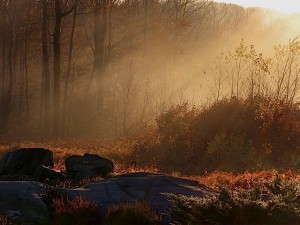
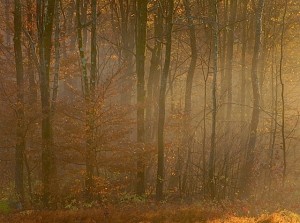
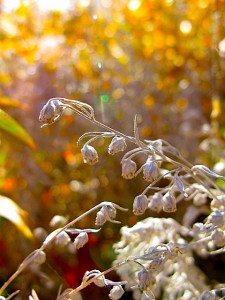
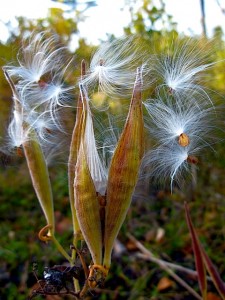
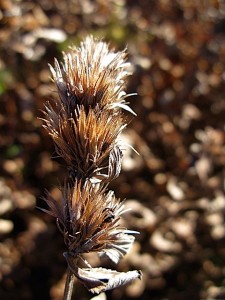
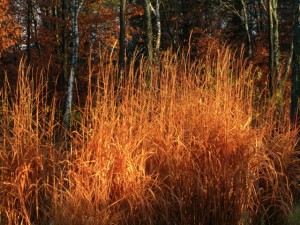
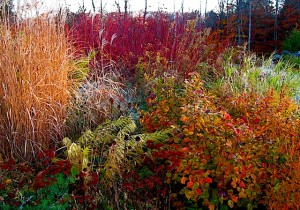
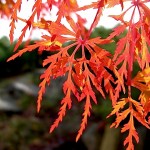
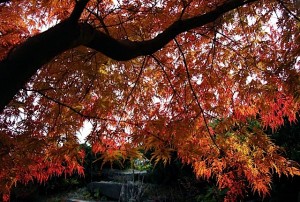
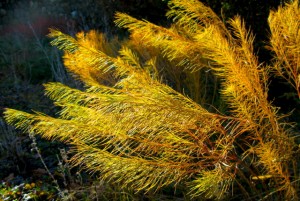
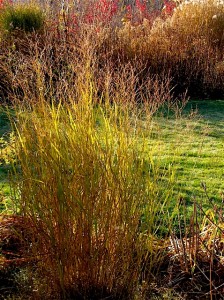
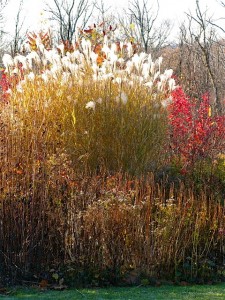
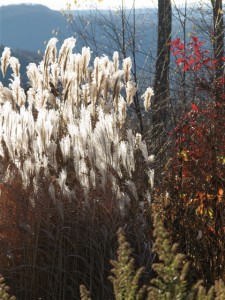
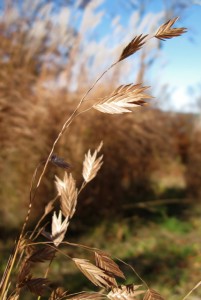

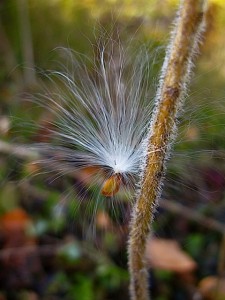
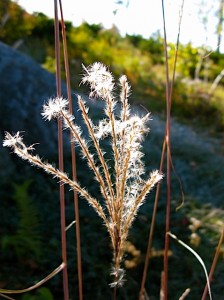
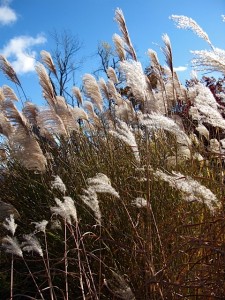
I love butterfly weed. Again, beautiful. You should write poetry to accompany the pictures. Your descriptions are poetic.